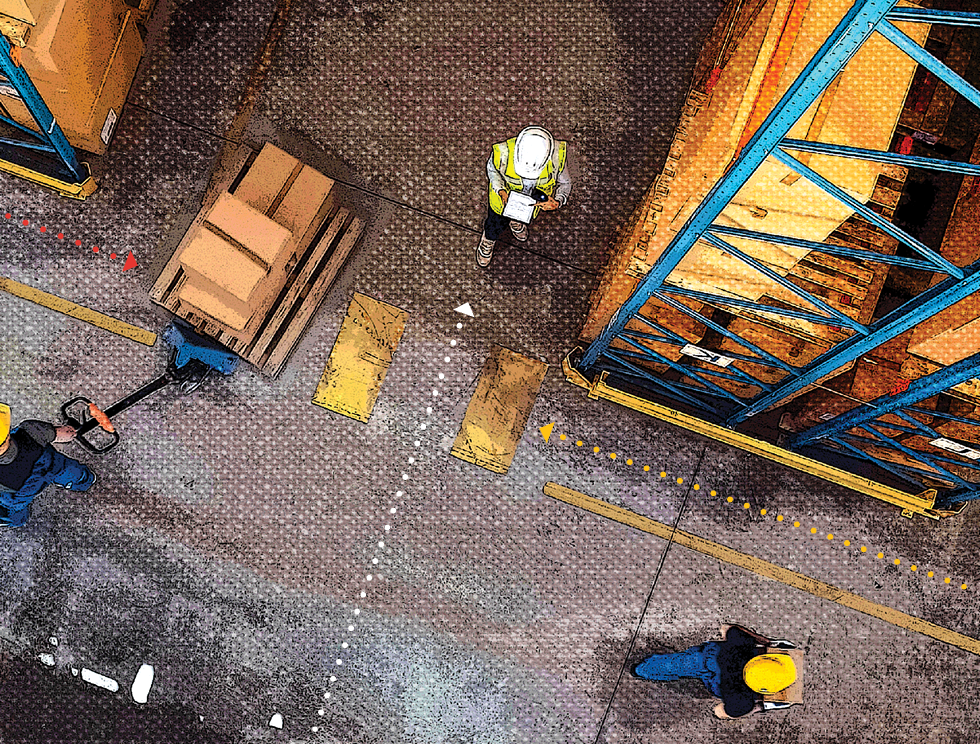8 Supply Chain Trends to Follow in 2024
As we enter 2024, leaders in the supply chain industry are reflecting on the successes and failures of the past year and preparing for the new year that lies ahead. In today’s fast-paced economy, it’s more important than ever to stay on top of the current trends and use present data to make predictions for 2024.
Whether you’re a business owner working with a 3PL or just interested in staying up-to-date on the latest trends, you’re in the right place. WSI has put together a list of trends that we anticipate seeing in 2024.
We consulted with company leaders TJ Mccarthy (Supply Chain Process Lead) and Måatt Schroeder (VP of Investment and Pricing) and asked them their thoughts on what we’ve staked out as next year’s biggest trends. Here are our picks:
1. Inflation-Driven Cost Increases
Inflation has been rising due to a variety of factors, but one thing is certain: prices will continue to rise.
For 3PL providers, higher costs of goods and services can affect their profits. Providers will try to absorb these costs however they can, but unfortunately, inflation means that customers will have to expect prices to change in the coming year. For example, if the cost of inputs that 3PL providers use goes up, like fuel for transportation, they might have to charge their customers more to make up for it.
Keeping an eye on inflation rates can help you anticipate price hikes, no matter the industry you’re in!
2. Continued Sustainability Efforts
Sustainability has remained top-of-mind for customers through 2022 and we expect that sentiment to carry into 2023. Clients expect their business partners to do what they can to minimize their impact on the environment. The logistics industry is said to be responsible for 11% of the world’s carbon emissions – That’s a LOT.
To remain a responsible steward of our environment, WSI pursues sustainability initiatives in all of our facilities nationwide and throughout our transportation network. Our workforce is dedicated to discovering and implementing new ways to conserve resources, limit emissions, and reduce waste.
3. Higher Service Standards
Another thing we know about the services industry is that consumer expectations are always rising. That’s fine with us – we like to rise to the challenge! But it’s important to note that there are several reasons why consumers are expecting better and better service from their 3PL providers. Some of these factors include:
- Competition: Increased competition in the logistics market means that consumers have more options to choose from. Your business needs to provide superior service in order to stay top-of-mind.
- Technology: As new technology becomes available in the logistics industry, consumers expect their 3PL providers to utilize advanced systems and tools to ensure maximum efficiency and accuracy. For instance, understanding the difference between EDI vs API can be crucial for efficient data exchange.
- More Knowledgeable Consumers: Don’t underestimate them – consumers are researching the supply chain process and expect greater transparency from their 3PL providers. This includes visibility into their order status and information about handling and transportation of their products.
If you’re looking to delve deeper into the intricacies of the supply chain, our detailed guide on transloading can provide further insights.
Make sure your 3PL can meet your standards; it will be critical for your business’ success in 2023. If they can’t (or charge you a fortune to get it done), you may need to consider making a switch.
4. Cross-Training Employees Will Be a Necessity
Cross-training is the process of teaching employees the skills necessary to perform in another role. We anticipate cross-training to become critical in the supply chain industry in 2023 as 3PLs face pressure to become more efficient, flexible, and reliable.
A few of the benefits of cross-training employees on multiple areas of the logistics process include the following:
- Improved efficiency: By having multiple employees trained in multiple tasks, a 3PL company can be more flexible and efficient in how it handles incoming orders and assignments. This can help to reduce bottlenecks and improve overall productivity.
- Increased reliability: Cross-training ensures there are always backup employees available to handle tasks in an emergency or disruption. This can help ensure that orders stay on track and your customers receive their orders on time!
- Enhanced customer service: By having a team of employees who are knowledgeable about various aspects of the business, a 3PL company can better meet the needs and expectations of its customers.
5. LOGISTICS-AS-A-SERVICE (LAAS)
When you hire a logistics service provider (like us!) to handle your distribution needs, you employ a team of experts to help you get your products where they need to go. The distribution and fulfillment branches of the supply chain have expanded rapidly in the past decade, and TJ Mccarthy expects this expansion to continue as many stores are offering discounts for recurring online orders. For example, customers have the option to subscribe to receive toilet paper via Walmart or Amazon at a 10% discount, when previously they would have to order every month at full price.
At the same time, companies are looking to scale and grow, which often requires them to outsource their logistics operations to 3PLs. One of our concerns is variability. “The risk for these companies in utilizing what is essentially a 4PL service,” says Matt Schroeder, “is that, unlike other services, warehousing companies don’t necessarily have a minimum service level expectation from carriers: there are widely varying capabilities across warehouse companies, and that can directly impact the ultimate service those companies are receiving.” At WSI, we know that Reliability is Everything™, so we are capable of a wide range of inventory management, fulfillment, and transportation services for whatever your business may need.
6. INSOURCING AND MADE IN THE USA
“The transportation cost and lead time of products made abroad are becoming prohibitive,” observes TJ, “This has led to three major developments: first, delays at inbound ports and rail capacity continue to delay shipments, second, long lead times equals higher inventories, and third, there are incentives of all types available for manufacturers in the USA.” It’s no secret that American ports have been congested for the past two years, and experts don’t anticipate them opening up anytime soon.
Avoiding those busy ports by producing domestically will certainly reduce lead times, but one of the potential drawbacks is higher manufacturing costs. Matt sees this cause-and-effect and proposes a solution: “With increased automation and the supply chain issues everyone has experienced throughout the global pandemic, it can sometimes be a choice between slightly lower margins and no revenue at all. As a USA-based 3PL, WSI can absolutely help companies manufacturing within the USA to quickly and efficiently distribute their product.” Not ready to make the switch? Take advantage of our global transportation network.
7. AUTOMATION AND ROBOTICS
Automation has become fully integrated with our everyday routines: Ordering from kiosks at McDonald’s, getting coffee poured by automated baristas at Starbucks, and checking out our own groceries at Walmart. Companies are using automation and robotics to enhance their supply chains. UPS and Amazon, for example, are testing automated delivery drones. “Robotics and automation will become even more critical throughout the next year,” says Matt. Amid the pandemic, supply chains across the nation are facing massive labor shortages. “There is a tradeoff to consider when looking at automation and robotics for public 3PLs in that oftentimes great automation materially reduces flexibility.” WSI has public buildings from coast to coast and is constantly searching for useful automation that will suit our more industrial-based operations. “We’re looking forward to using robotics and automation in our fulfillment-based operations and are targeting deployment in the next 12-24 months as we find an opportunity that is both a prudent investment and not overly limiting.”
8. DIGITAL TRANSFORMATION
Retailers are now striving for a “seamless customer experience”, making it possible for customers to order products through any medium: on the phone, via social media, online, and in traditional brick-and-mortar stores.
An important question we ask ourselves is, “How can we manage those different types of customer channels and fulfillment models?” TJ answers this, “By taking advantage of real-time visibility and tracking throughout the supply chain process through the use of scanning and RFID” we can achieve that seamless customer experience. Matt adds, “Ultimately, we can achieve this by leveraging a world-class technology stack and WMS (Warehouse Management System) to seamlessly aggregate, pick, and ship orders from a variety of disparate sources. This means, that regardless of the channel, our customers’ end customers will have an excellent experience.”
Conclusion
That wraps up our predictions for supply chain trends in 2024!
The world of supply chain and logistics is fast-paced and ever-evolving. As we’ve seen, there are many trends shaping the industry today, from rising costs to the benefits off cross-training. It’s important to stay up-to-date on these trends in order to stay competitive and adapt to the changing business landscape.
For those interested in optimizing their warehouse processes, our guide on improving warehouse receiving processes offers valuable insights.
Thinking about partnering with a 3PL in the new year? Connect with WSI to learn about our vast array of services and completely customized pricing.
About the Author

WSI Team
WSI is one of the largest privately held 3rd party logistics companies in the U.S. and spans a nationwide distribution network with global logistics reach.


